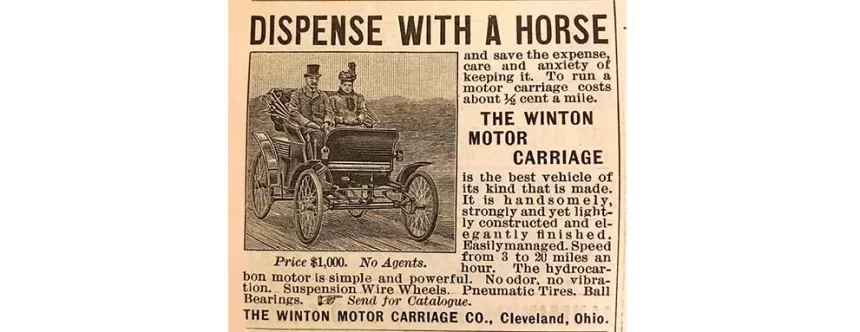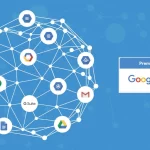It is tomorrow for C-4 Analytics, LLC, the Boston-based digital agency that has transformed digital automotive marketing. As C-4 Analytics prepares to unveil an all-new AIM (Automotive In-Market) platform at NADA 2017, we thought it would be fun to share our inspiration, which dates back to the dawn of the automotive industry and automotive marketing.
Consider the infamous “dispense with a horse” advertisement for The Winton Motor Carriage. It appeared in Scientific American in July 1898, and is considered the first automobile advertisement ever run in the United States. I recently acquired one of the few remaining intact magazines, which will be on display at NADA.
Automotive In-Market Advertising circa 1898
Those of us at the forefront of digital marketing like to think that we’re brave innovators charting new frontiers in business-customer communications. In reality, we are building on a rich history that stretches back more than a century.
Today, the ad would most likely be delivered in the form below; ultimately just a variation on the theme, but in a medium that couldn’t have been fathomed at the time.
Scientific American was not light reading for the masses, but a highly technical newspaper read by wealthy industrialists and researchers looking for information on the latest patents. Its audience was well-educated and fascinated by technology; a fertile ground for the early adopters who could make or break new products. By choosing Scientific American, Winton put their advertising budget where it would do the most good and get the best possible results.
Winton determined two factors that would make their ad a success:
- The ad must appear where the best potential customers will see it.
- The ad must speak to that audience’s needs.
To that end, the choice of Scientific American for the first automobile ad is not a coincidence. It is targeted advertising. Winton’s “horseless carriage” sold for $1,000, the equivalent of $27,479.23 today. While the relative price of cars has remained largely unchanged for more than a century, average daily wages in 1898 were $2.43, which put the Winton out of reach for all but the wealthiest Americans.
The ad was designed to reach those wealthy, technology-oriented early adopters, and it worked. Winton sold their first vehicle to Robert Allison, who saw their ad in Scientific American. Perhaps the list of features, such as pneumatic tires, ball bearings and suspension wire wheels, closed the deal. Perhaps Mr. Allison was enticed by the economy the car offered, costing just half a cent per mile to operate, compared to the much higher costs of feeding, watering and stabling horses. Whatever the motivation, in that moment, Winton proved not just that automobile marketing works, but that targeted automobile advertising works.
Automotive In-Market Advertising circa 2017
Today, nearly any agency and even a myriad of products can write an ad that aligns with customer needs. The challenge lies in finding groups of the right buyers, cost-effectively, at the right time, in an ever-growing environment of digital noise. More data has, in some cases, complicated the search, which is why C-4 Analytics has developed its new AIM platform, which targets specific automotive audiences rather than keywords or a specific buyer.
To increase your sales you need to reach motivated, in-market customers who have shown a clear intent to buy. These are buyers who have visited your specials pages, gone to AutoTrader or Cars.com, perhaps even requested an e-price from one of your competitors. Reaching one or two of these buyers cost-effectively on Facebook won’t impact your monthly sales; you need to reach them by the dozens. C-4 Analytics’ new AIM platform is the only solution of its kind that can isolate and deliver groups of customers—in-market audiences—to your dealership by tapping into previously inaccessible data streams from major online auto shopping, listing and review sites. And it can do so without the need to, hassle of or cost of negotiating with each of these third-party automotive sites individually to gain access to their customer, buyer and data sets.
The best lessons from yesterday meet the data-driven marketing strategies of today at NADA 2017.
Get direct access to highly targeted, local, in-market customers, who have visited third-party sites and are ready to buy. C-4 Analytics’ new AIM program may be the most unfair competitive advantage we have ever offered, and you will want to see us at NADA to find out how it can improve your sales.
As we begin to write the next chapter of C-4 Analytics, we do so with a healthy regard for our history and the history of our industry. Whether you want to hold the top place in your market or the first automotive ad in your hands, Stop by Booth 4501 for a demo of our new AIM Network to see the targeting of yesteryear in the flesh yourself. The first ten people to mention this post will receive a high-resolution print made from the original “dispense with a horse” ad that started it all.










